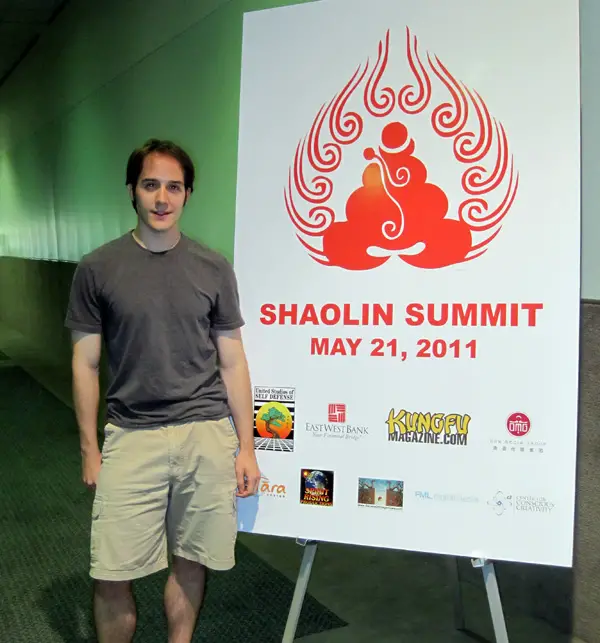Shaolin Summit 2011
I attended the 1st Shaolin Summit as a reporter for The Epoch Times Newspaper and interviewed the Head Abbot of the Shaolin Temple, Shi Yongxin.
As a practitioner of Shaolin Gong Fu for over 12 years, and a student of East Asian studies, I thought it would be a lot of fun to go there, learn some new things and meet some good people.
The result was mixed.
The summit took place at the Los Angeles Convention Center on May 21. The day was a combination of Shaolin culture and business motives, indirectly fueled by the Chinese Communist Party’s religious affairs and tourism departments, as well as American martial artists and businessmen who admire Shaolin martial arts.
Aside from the standard Shaolin Gong Fu demo’s, there were also two panel discussions.
The first was called “Zen, the Power of the Mind and Martial Arts.”
The panel was moderated by Jonathan Blank and guests included Mark Dacascos (actor and host of Iron Chef), Lucia Rijker (world champion kick boxer), Shi Yanfan (a Caucasian Shaolin monk and head of the Shaolin Temple Los Angeles), Gene Ching (Associate Publisher of Kung Fu Tai Chi Magazine), and Dr. David Rapkin (Director of the Mind-Body Medicine Group at UCLA). They talked about the importance of proper breathing and mind-intent, and how they can heal the body or lead to different outcomes in life.
The second panel included the Head Abbot and 5 master Shaolin monks. The monks talked about traditional Chinese medicine, proper breathing techniques, Shaolin culture, and what it means to be enlightened and live properly.
These were the most interesting parts of the day for me, even though they were fairly shallow. However, it’s understandable, given that the casual guest to the summit might not be an expert in these fields. Still, it would have been nice to hear a discussion with more substance.
Underlying the entire event however, was business and finance.
You can read the details in my Epoch Times article on the CEO Monk, Shi Yongxin.
Culture or Commercialism?
In short, the Shaolin Temple has become a monetized external shell of its former self. The current abbot has commercialized the temple and transformed it into a den of tourism and profit seeking financiers.
I traveled to the Shaolin Temple in 2003 while studying abroad in China. I was heartbroken to see such a stark contrast between the Shaolin Temple I read about in books and the reality that lay before me. The true cultivators of that temple were gone.
Unfortunately it has only become worse with the passage of time. The head of the United Studios of Self Defense, the largest branch of martial arts schools in the country, told me so while at the summit. He visits the temple with his students on a semi-yearly basis.
It saddens me to say this, but the Shaolin Temple and the martial arts I loved have been corrupted at the source.
The Cultural Revolution of the 1960’s and 70’s caused irreparable damage to not only the temple walls, but more importantly, the Shaolin culture. The true monks fled the temple so that they would not be polluted by Communism and politics, and those who stayed were the younger monks that are now the older generation. The higher level teachings were lost.
The head abbot that replaced the former is so focused on profiting from the interest in Shaolin that he is blind to this important principle: No matter how much he rebuilds the walls or adds new gymnasiums to support the influx of fresh students, he can never buy back the true Shaolin spirit!
The traditional teachings and the current reality could not be any further apart then they are right now.
My hope is that the CCP affiliated abbot that they have installed at the head of the temple is replaced by a genuine cultivator that can restore the reputation of Shaolin. They need to return to the true teachings.
You can see here a powerful comparison between Shi Yongxin and the monk’s of the Dabei Temple. The Dabei monks are another Buddhist sect in China. But they have chosen to follow their traditional ways of life, while the Shaolin have become business oriented.
What do you think of this issue? It’s by no means simple, and I can understand the perspective of both sides. Without proliferation of the art, then perhaps less people would be aware of it or have a chance to practice. On the other hand, what exactly is it they are buying into? In the end, where it will lead them?
When it comes down to it I have to take sides with being genuine and true, because no amount of money can buy you the truth.

